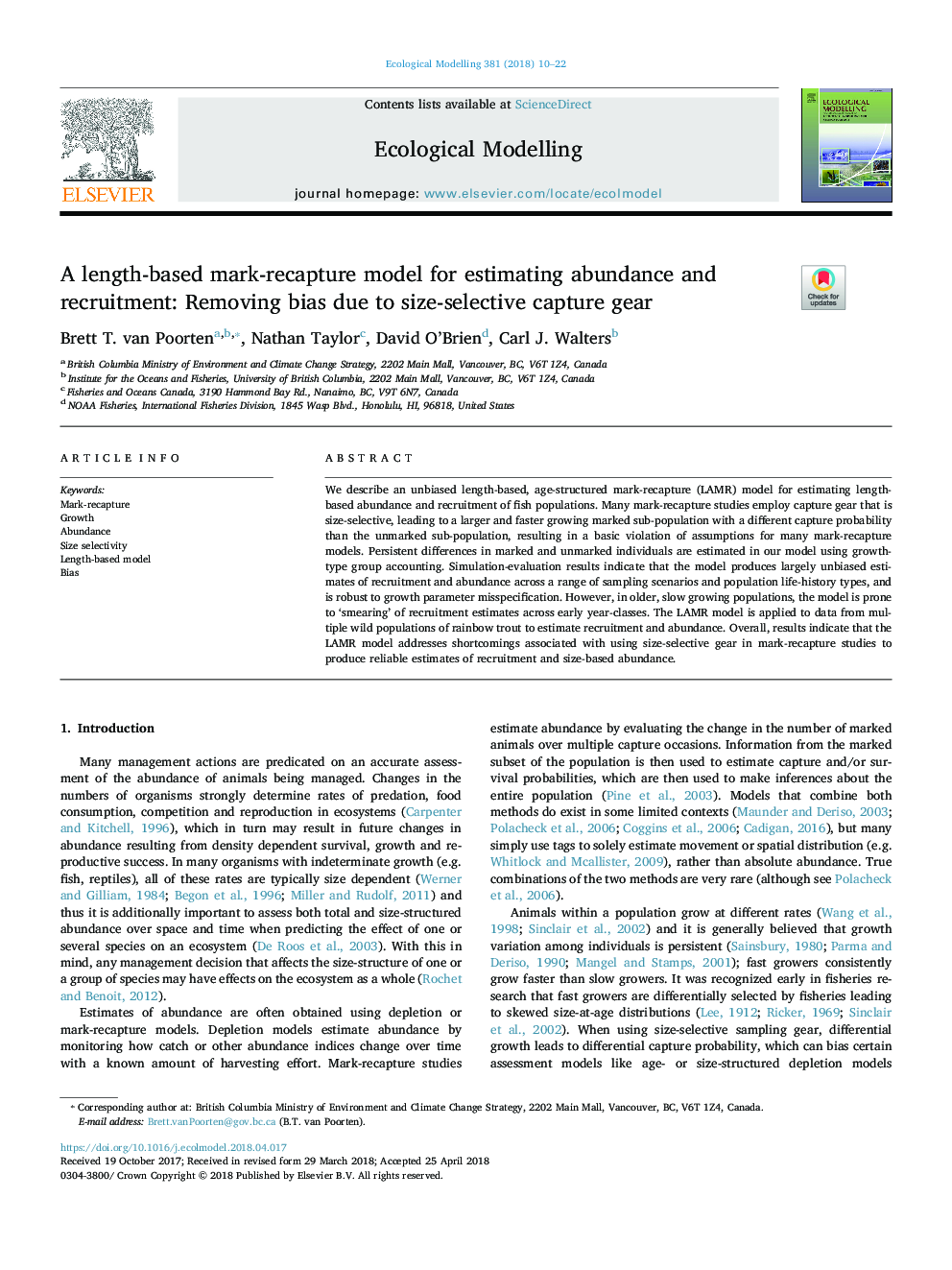| Article ID | Journal | Published Year | Pages | File Type |
|---|---|---|---|---|
| 8846032 | Ecological Modelling | 2018 | 13 Pages |
Abstract
We describe an unbiased length-based, age-structured mark-recapture (LAMR) model for estimating length-based abundance and recruitment of fish populations. Many mark-recapture studies employ capture gear that is size-selective, leading to a larger and faster growing marked sub-population with a different capture probability than the unmarked sub-population, resulting in a basic violation of assumptions for many mark-recapture models. Persistent differences in marked and unmarked individuals are estimated in our model using growth-type group accounting. Simulation-evaluation results indicate that the model produces largely unbiased estimates of recruitment and abundance across a range of sampling scenarios and population life-history types, and is robust to growth parameter misspecification. However, in older, slow growing populations, the model is prone to 'smearing' of recruitment estimates across early year-classes. The LAMR model is applied to data from multiple wild populations of rainbow trout to estimate recruitment and abundance. Overall, results indicate that the LAMR model addresses shortcomings associated with using size-selective gear in mark-recapture studies to produce reliable estimates of recruitment and size-based abundance.
Related Topics
Life Sciences
Agricultural and Biological Sciences
Ecology, Evolution, Behavior and Systematics
Authors
Brett T. van Poorten, Nathan Taylor, David O'Brien, Carl J. Walters,
